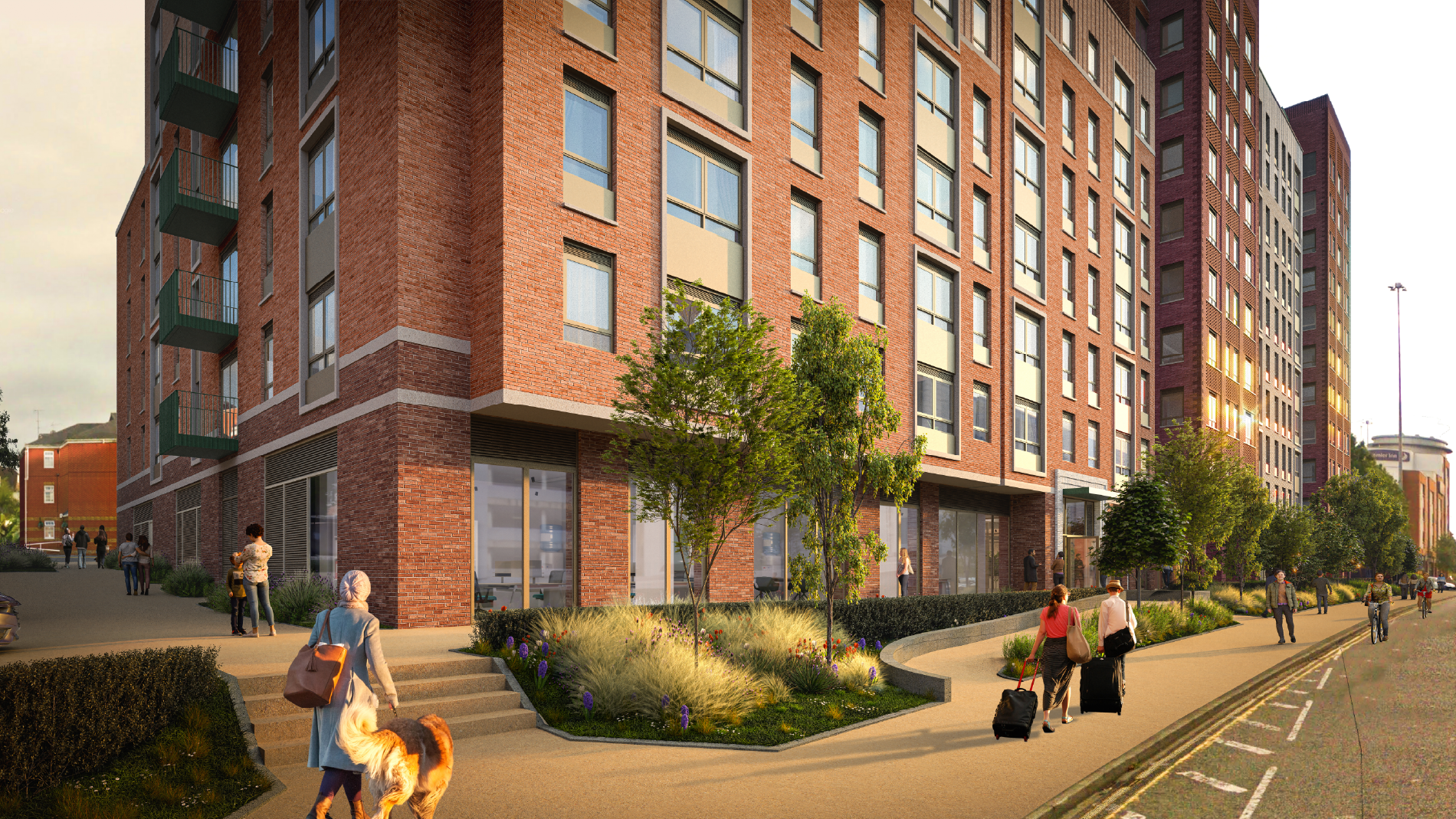Artists’ impression of the scheme looking west down Mill Lane
The site is located on the edge of central Reading, between Mill Lane and Crossland Road – next to the A329 and directly opposite the Oracle car park.
The site today
The site links urban and higher density townscape in central Reading to the north and the intimate character of the London Street Conservation Area to the south.
As a former customer collection facility, it is a typical mid-1990s warehouse and car park. The building has little architectural merit and doesn’t positively contribute to the setting of the area.
The story so far
The Mill Lane site has had a front-row seat to the development of Reading – a story which reaches back centuries. The name ‘Mill Lane’ refers to the old St. Giles’ Mill, the largest mill serving the town, which is recorded as far back as the Domesday Book of 1086.
The water tower which served the mill stood about where the Oracle car park is today, and was a striking feature of the local skyline before it was demolished in 1901.
For much of the 20th century the site was home to a clothing factory, first built to aid production of servicemen’s trench-coats during World War I before being used as a John Lewis customer collection depot from 1996-2021.
Meeting the needs of today and tomorrow
Job opportunities, a thriving university, cultural vibrancy and easy access to green infrastructure are among the many reasons why Reading continues to be an attractive place to live and work.
The latest Census (2021) highlighted that the town’s population grew by 12% between 2011-2021 – one of the highest increases in the South East – and that 48% of the population rent, compared to an average of almost 38% across England.
The Census also reported that Reading is in the top five towns for good economic growth and the top ten for business numbers, private sector jobs and qualifications.
Software companies such as Microsoft and Oracle have contributed to its place at the heart of the UK’s ‘Silicon Corridor’, whilst the opening of the Elizabeth Line in 2022 reinforced the town’s position as a regional rail hub.
For Reading to keep on attracting world-leading firms and retaining talent, it needs high-quality housing. Our development alone isn’t going to solve Reading’s housing problems – but it would create a new rental community that can make a contribution.
